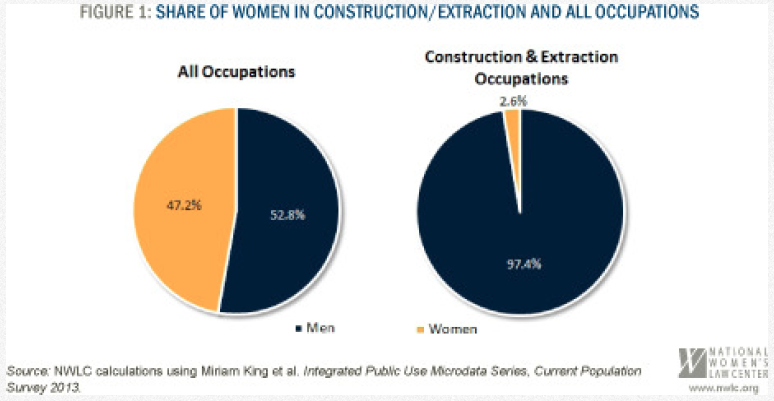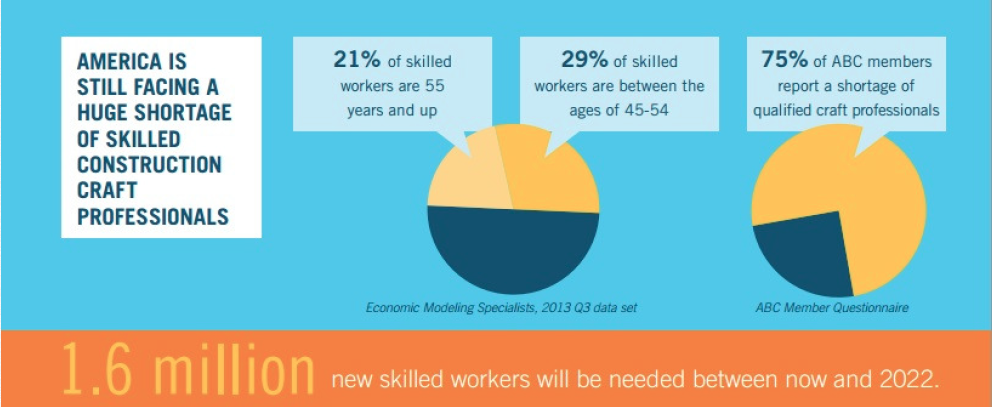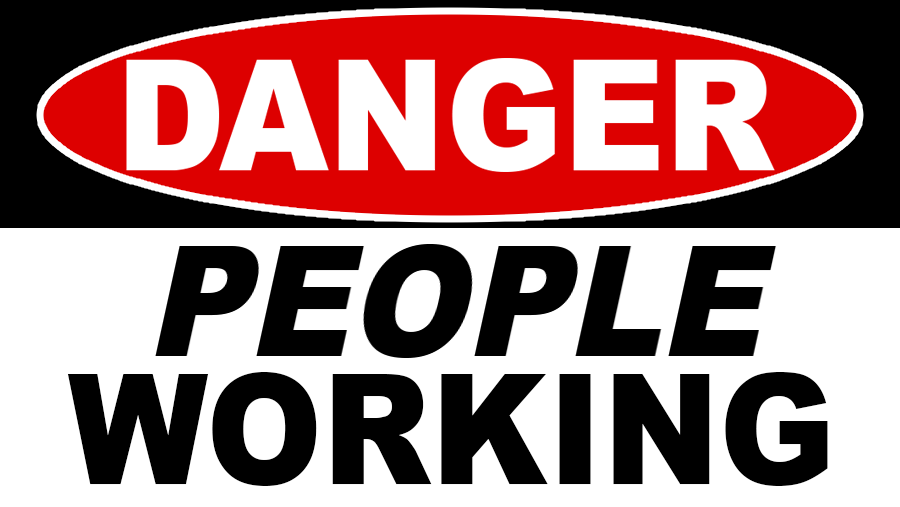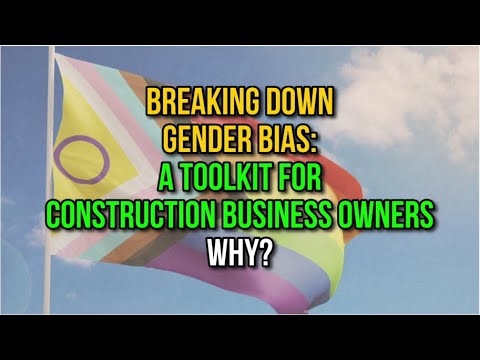The construction trades have long been one of the industries with a high percentage of gender bias and a low percentage of women in the workforce – as of 2015, fewer than 3% of workers in the Construction and Extraction trades were women.

While data on Lesbian, Gay, Bisexual, Transgender, and Queer (LGBTQ) workers in the trades is not available, it is clear that many women and LGBTQ workers face bullying and discrimination from sexism, homophobia, and transphobia in the workplace.
Our goal in developing this Toolkit is to offer an array of suggestions and solutions to help small business owners and managers break down gender stereotypes and create companies that are inclusive of all genders and sexual orientations.
We recognize that many other kinds of discrimination happen in the workplace—race, class, ethnicity, ability—but this Toolkit is specifically focused on gender discrimination.
Sections in this gender inclusion toolkit:
- Defining the Challenge
- Changing Company Culture
- Hiring and Retaining a Diverse Team
- What is Privilege?
- Becoming an Ally
- Additional Resources
1. Defining the Gender Discrimination Challenge
Naming and confronting bias and discrimination in the workplace is a key responsibility for any business owner.
And it is worth it. According to cumulative Gallup Workplace studies, companies with inclusive cultures do better on several indicators than those that are not inclusive, with:
- Customer satisfaction +39%
- Productivity +22%
- Profitability +27%
- Lower turnover -22%
Source: www.workforcediversitynetwork.com/docs/business_case_3.pdf
Building the Workforce
 Source: http://www.workforceunderconstruction.com/featured/the-skilled-labor-shortage-from-4-perspectives/
Source: http://www.workforceunderconstruction.com/featured/the-skilled-labor-shortage-from-4-perspectives/
The construction industry is faced with an aging workforce and a shortage of skilled labor. By expanding your recruitment efforts to include women, trans, and gender non-conforming people, you are expanding the pool of potential employees by over 50 percent!
“We all want to live in a world where there’s no question about why they picked you–you were the best, most qualified candidate, full stop.
But we can’t live in that world yet, because we haven’t all had equal privilege and opportunity. Some of us start with clear, unfair advantages rooted in history.
Failing to acknowledge that distribution and pretending there’s an equality of privilege is a form of willful ignorance that maintains those biases.”
- Rand Fishkin, co-founder of Moz and Inbound.org
2. Changing Company Culture
- Develop and enforce a zero-tolerance sexual harassment policy. Below is a downloadable sample sexual harassment policy along with a sample complaint procedure.
- Use gender-neutral language in job postings and job descriptions.
- Ensure that adequate gender-neutral restroom facilities are available on every job site.
- Ensure that all crew members have properly fitting PPE.
- Connect with tradeswoman organizations and post your jobs there.
- Create opportunities for mentorship.
Examples of Behaviors that Create a Hostile Environment
- Vulgar jokes or teasing
- Comments about body parts or sex life
- Leering, staring or gesturing
- Touching: brushing, pats, pinches, hugs
- Suggestive or demeaning pictures, cartoons, or calendars
Pronouns & Self-Identification
Respect everyone’s self-identification. Call everyone by their preferred name/s and pronoun/s. Use language and behavior that is appropriate to their gender self-identification.
If you don’t know what pronouns or gender labels someone prefers (and there’s no mutual friend around to clue you in), just ask them. Politely. And respectfully. For example:
“What pronoun do you prefer?”
or
“How do you like to be referred to, in terms of gender?”
If you misrecognize someone’s gender, it’s okay; don’t freak out. Apologize once and get it right the next time. Misidentifying or being unable to classify someone’s gender does not have to be an awkward or shameful experience.
Some transgender or gender non-conforming people are bravely making more space for gender diversity by using language creatively. Respect these efforts and don’t dismiss them as silly, funny, weird or too difficult.
For example, some people prefer to be referred to as ‘they’, or as both ‘he’ and ‘she’ interchangeably.
Some people prefer to be referred to only by their name. Some people use non-binary pronouns like ‘ze’ and ‘hir’.
Source: Edited version based on Trans Respect/Etiquette/Support 101
Inclusive Language
Our everyday language can often unintentionally affect the people around us. By making small but intentional choices to use inclusive language, you can make the workplace more welcoming to women, trans, and gender non-conforming people.
When greeting others, avoid
- Ladies
- Gentlemen
- Guys
- Girls
- Ma'am
- Sir
Instead, consider these alternatives:
- Thanks, friends, have a good night
- Good morning, folks
- Hi everyone
- And for you?
- Can I get you all something?
Source: http://www.tonilatour.com/hello-there/
Confronting Offensive Talk
Stop an offensive remark before it happens. You might have heard statements like these:
“I’ll probably be accused of being a sexist for saying this, but . . .”
or
“Some people might be put off by this joke, but. . .”
If you hear that language, you might try nicely stopping the remark before it gets off the ground.
Here are some possible rejoinders:
- “Go ahead, and then I will tell you why I think it is sexist.”
- “If you’re saying it’s going to be offensive, I’d appreciate it if you didn’t say it.”
Respond indirectly. When someone makes an offensive remark, we have to weigh the costs of a potentially uncomfortable confrontation against the benefits of addressing the remark directly.
Here are some alternatives to saying nothing:
- “Wow.”
- “Yikes.”
- “Ouch.”
- “Could we elevate the conversation?”
- “Now that the sexist part of the conversation is over, can we move on?”
Respond directly. Answering offensive comments requires forethought, judgment, and courage, and it often works best when we keep our responses simple.
Consider responding with brief statements like these:
- “What do you mean by that?”
- “Do you really think that?”
- “It doesn’t seem like you to say something like that.”
- “No, I don’t think about it that way.”
- “I don’t find that funny.”
- “Would you want to have that said to/about your wife, daughter, or sister?”
- “That type of remark about people makes me uncomfortable.”
- “Wow, I didn’t know you felt that way about women (or trans or gender nonconforming people).”
- “I’d rather not talk that way about people.”
- “I don’t like to think about people that way.”
If an offensive remark is repeated, nicely ask for what you want (and don’t want): When someone repeats a remark after you’ve previously asked them to stop, try politely telling them that you’d prefer they not share their sexist/racist/homophobic/transphobic comments when they’re with you.
For example, if someone is calling you “honey” in a setting that makes you uncomfortable, tell the person that you would prefer to be called by your name.
Source: http://stopsexistremarks.org/stop-sexist-remarks-the-5-minute-guide/
What Does Zero Tolerance Mean?
It is critical for every employer to develop and distribute a written no-harassment policy.
If your company has expressed its harassment prevention policy as a “Zero Tolerance” policy, be certain that supervisors and managers all understand what the “Zero Tolerance” represents.
If it means that we will not tolerate behavior that might violate the law and that we will terminate anyone who engages in such serious misconduct, then everyone also needs to understand the elements of the law of “hostile environment harassment.”
If “zero tolerance” means that we will not overlook more trivial violations of the company’s demand for respect in the workplace, then it is important that everyone in management understands that this does not mean we seriously discipline any violation of workplace etiquette.
Rather, it means that we do not ignore even childish, immature, or unprofessional workplace behavior, and we use appropriate progressive discipline, including informal discipline and coaching and counseling, for such behavior.
In turn, when a violator has been warned and repeats the behavior or when the behavior truly approaches a violation of the law, those in management need to understand the gravity of the situation and how to initiate appropriate serious disciplinary action, including termination of employment.
What You Can Do
- Create a strong sexual harassment policy (downloadable samples at the bottom of this page)
- Respond to sexual harassment complaints right away
- Never laugh at or encourage inappropriate jokes
- Keep your office parties “PG” rated
Source: http://www.micropact.com/blog/detail/what-does-zero-tolerance-actually-mean/
3. Hiring and Retaining a Diverse Team
We understand that, as a business, you need to do what’s right for your clients, employees, and the bottom line. You can use fairness, inclusion, and respect as tools to help you stand out from your competitors.
Writing the Job Description and Ad
The images and language used in advertisements in male-dominated industries send a strong signal about whether or not a company wants to attract women, trans or gender-nonconforming people to work with them.
Be sure to use gender-neutral language.
Example:
“ABC Builders is looking for tradespeople to work at a variety of construction projects. Candidates must have their own tools, have reliable transportation and the ability to travel.”
In your ad or post, you might include the following intro:
“We provide equal opportunities to all applicants and employees without regard to any legally protected status, such as race, religion, age, color, gender, gender identity, national origin, veteran status, sexual orientation, and disability.”
Places to Post the Job:
- National Association of Women in Construction
- Vermont Works for Women
- NESEA
- Yestermorrow, Design/Build School
- North Bennet Street School
Tips for Retention
Working environments that are inclusive, safe, and flexible benefit all employees.
Sponsor and offer an apprenticeship program to young women, trans, and gender non-conforming people and promote the career opportunities available in the trades.
Offer a buddy system that starts from the job offer stage and assists women, trans, and gender non-conforming people to form relationships, build networks and transition successfully to the company.
End isolation on worksites by assigning women, trans, and gender non-conforming people, especially those new to the trades, in pairs or more.
Guarantee pay equity within your company. Change the company’s culture to embrace diversity and flexibility as an ongoing commitment to the entire workforce–not just ‘special treatment’ for women, trans, and gender non-conforming people.
Communication Styles
Acknowledge that there are common differences in communication styles between genders.
Effective relationships depend on understanding communication differences.
Men tend to be authoritative and direct, both qualities that are commonly associated with leadership, which commonly lead to men being promoted more quickly than women.
In group conversations, pay attention to different communication styles and create space for quieter voices to be heard.
Tip: At company meetings, encourage all employees to share their feedback and create space for constructive criticism that can help EVERYONE do their job better.
4. What is Privilege?
Privilege refers to the social, economic, and political advantages or rights held by people from dominant groups on the basis of gender, race, sexual orientation, social class, etc.
For example, men often experience privileges that people of other genders do not have.
A key aspect of privilege is that—due to its unearned nature—those who have privilege often do not realize they have it. In other words, they don’t see the access and opportunity being a member of a dominant group affords them.
There are many other types of privilege, too:
- Class Privilege
- Race Privilege
- Educational Privilege
- Gender Privilege
- Gender Identity Privilege
- Age Privilege
- Body Size Privilege
- Able-Bodied Privilege
- Life on the Outside Privilege
- “Passing” Privilege
- Religious Privilege
- Sexuality Privilege
Source: Transformative Justice Law Project of Illinois
What does privilege look like?
- If you expect time off from work to celebrate religious holidays, you have Christian privilege.
- If you can use public bathrooms without stares, fear, or anxiety, you have cisgender privilege.
- If you cannot be legally fired from work because of your perceived sexuality, you have heterosexual privilege.
- If you are confident that the police exist to protect you, you have white male privilege.
- If you don't have to think about it, it is a privilege.
Becoming aware of privilege should not be viewed as a burden or source of guilt but rather an opportunity to learn and be responsible so that we may work toward a more just and inclusive world.
Source: University of San Francisco
How do we check our privilege?
1. Acknowledge that the privilege exists.
2. Don't feel guilty about it.
3. Understand that your privilege will not go away until the root systems that give you privilege are abolished.
4. Be an ally to communities that you are not a part of.
5. Recognize how and why your privilege can destroy community empowerment.
6. Use your privilege to benefit groups you are not a part of.
7. Educate others with your privilege to check themselves.
8. Call people out and embrace being called out about privilege.
“Washing one's hands of the conflict between the powerful and the powerless means to side with the powerful, not to be neutral. ”
― Paulo Freire
Source: Transformative Justice Law Project of Illinois
5. Being an Ally
An ally is typically a member of an advantaged social group who uses social power to take a stand against social injustice directed at targeted groups.
Examples are white people who speak out against racism and men who are anti-sexist.
An ally works to be an agent of social change rather than an agent of oppression.
Characteristics of an Ally
- Feels good about own social group membership
- Is comfortable and proud of own identity
- Takes responsibility for learning about own and targeted group heritage, culture and experience
- Takes responsibility for learning how oppression works in everyday life
- Listens to and respects the perspectives and experiences of targeted group members
- Acknowledges unearned privileges received as a result of advantaged status
- Works to eliminate or change privileges into rights that targeted group members enjoy
- Recognizes that unlearning oppressive beliefs and actions is a life-long process, not a single event, and welcomes each learning opportunity
- Is willing to take risks, try new behaviors, act in spite of own fear and resistance from other advantaged group members
- Takes care of self to avoid burn-out
- Acts against social injustice because it is in their own self-interest to do so (as well as in the interest of targeted group members)
- Is willing to make mistakes, learn from them, and try again
- Is willing to be confronted about own behavior and attitudes and consider change
- Is committed to taking action against social injustice in own sphere of influence
- Understands their own growth and response patterns and when they are on a learning edge
- Understands the connections among all forms of social injustice
- Believes they can make a difference by acting and speaking out against social injustice
- Knows how to cultivate support from other allies
Source: Teaching for Diversity and Social Justice, Second Edition, Routledge, 2007
Tips on Naming, Intervening, and Addressing Systemic Power
Allow people to respond on their own behalf and support those being targeted. Synthesize.
“What I heard from this person is this....”
Create space for those whom we are not hearing from.
“I'm going to take a moment to see if anyone who hasn't spoken in a while has something to say.”
“We've been hearing from a lot of men. Let's take a moment to see if any of the women, genderqueer, trans folks in the room have something to say.”
Name it when it's happening.
“I'm noticing...”
- “that I haven't heard from many folks of color recently.”
- “that there's a lot of interrupting happening, and that it's happening along gender lines. I want us all to work to become more aware of that and change that.”
- "What you just said can be hurtful."
Refrain from saying things that people hear as name-calling. Rather than
"What you just said is racist."
You can say:
“What you just said is hurtful to people.”
Or ask questions to support self-inquiry.
- "What makes you say that?"
- "Where did you hear that?"
- "What do you mean by that?"
- "Can you tell me more about that?"
Source: Anti-Oppression Resource and Training Alliance: http://aorta.coop/
Sources for ordering gender-neutral signs:
- Smart Sign
- My Safety Sign
Sources for Personal Protective Equipment Sized for Women:
- Lincoln Electric- welding gear
- Construction Gear
- E-Safety
- Aris Industrial
This toolkit was developed by Kate Stephenson and Mel Baiser of HELM Construction Solutions with help and feedback from many of our colleagues in the building trades and social justice movements. We recognize this is just a first step toward raising awareness of these issues in our industry and our workplaces, but we felt the need to start somewhere.












